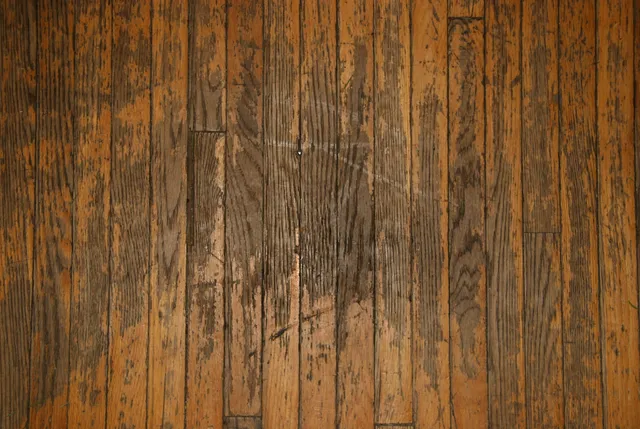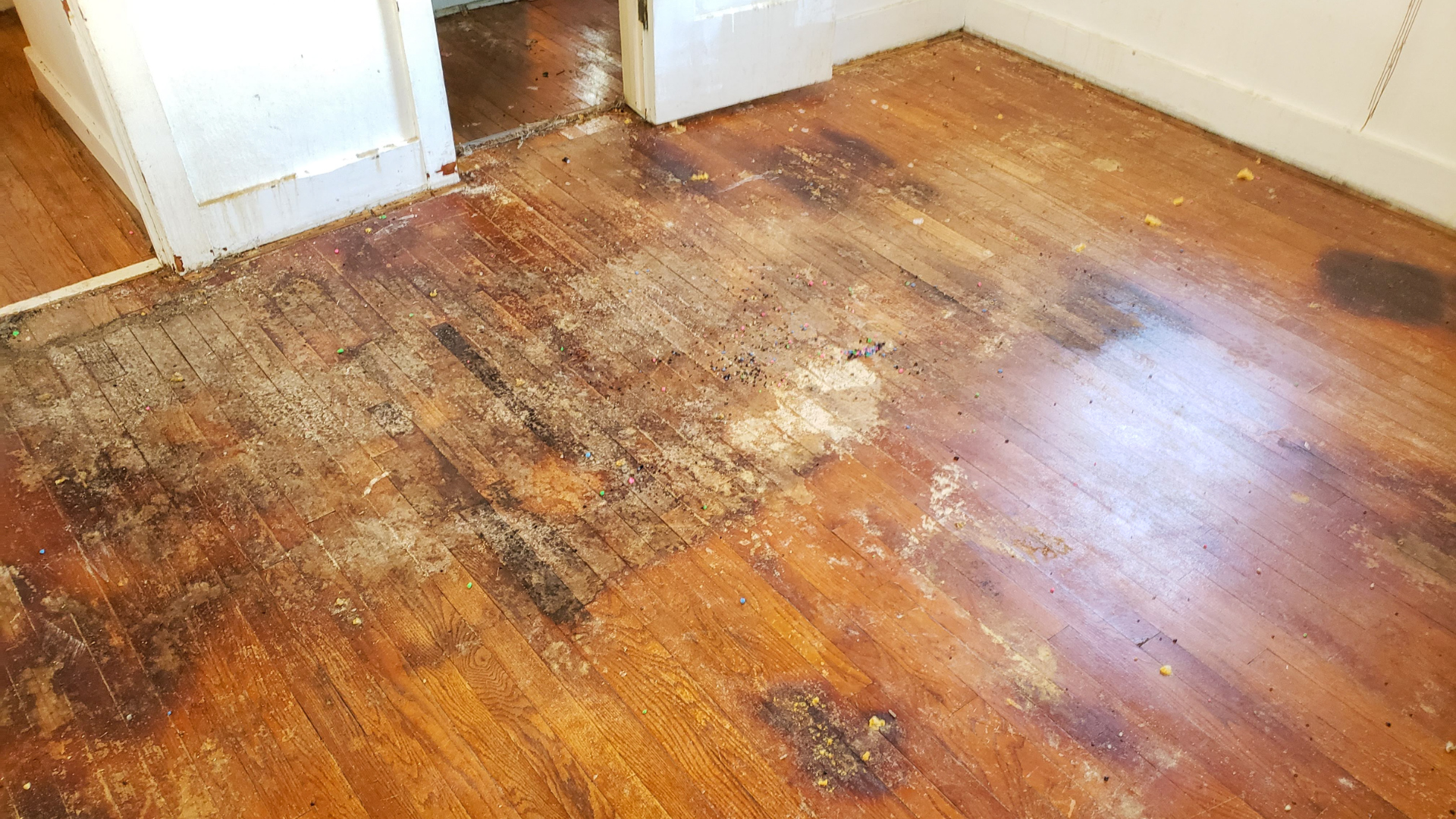One of the biggest benefits hardwood floors provide is their durability. When properly installed and well-maintained, high-quality hardwood floors may last for 50 years or longer.
But eventually, even the finest hardwood floors will begin to show signs of wear. They start to fade a bit, and the tiny scratches and scuffs start to add up, reducing the floor’s overall aesthetic charm. If left untreated, bigger problems may arise due to the woods natural ability to absorb moisture.
Homeowners who start noticing these issues usually know that they must do something. The question is, what’s the best remedy? Should they simply refinish the floor or is it better to replace it completely?
There are relatively few black-and-white answers here, but we’ll share some guidelines to help you figure out the best course of action for your hardwood floors.

Five Signs That You May Be Able to Refinish Your Hardwood Floors
While there are rarely guarantees, the following issues are generally easy to address by simply refinishing your floors.
1. You’re only seeing surface-level scratches.
Scratches will tend to develop in most hardwood floors over time, but as long as they don’t penetrate deeply into the wood, you can likely smooth them out though a buff and coat process. This process only removes the top layer of finish and reapplies it. It is also the most cost effective way to refinish a floor.
2. Any warping, if present, is minor.
Warping or cupping can sometimes represent a serious issue that necessitates the replacement of your floors. However, if the edges of the individual boards are only slightly higher than the centers, you can likely sand them down until they’re flat. Be careful when trying this method as the wood needs to reach an equilibrium between 6-9% moisture content or else the floor may revert back to it’s original shape over time.
3. Your floors are still thick enough to allow for sanding.
No matter what issues are causing you to consider refinishing your floors, you’ll always need to first verify that the refinishable area is thick enough to allow for the sanding process. This is most commonly an issue for floors that have already been refinished multiple times or very thin engineered hardwood floors.
4. Your floors have simply faded a bit.
If faded coloration or appearance is the only real problem you’re noticing, then refinishing your floors is almost certainly a viable solution. By sanding down the existing finish (and a small amount of wood) and recoating it with a new layer of stain and polyurethane or oil, you can end up with floors that essentially look brand new.
5. You’re not seeing any evidence of insect infestation.
You’ll almost always need to replace your floors if you see any live bugs or their droppings (frass) on or near your floors. Termites and wood-boring insects can significantly harm the structural integrity of the boards, which represents a potential safety hazard.
Five Signs That You May Need to Replace Your Hardwood Floors
Unfortunately, if you notice any of the following signs, you may find that a complete hardwood floor replacement is necessary.
1. Your floors are exhibiting severe warping.
Severe warping or cupping is generally not fixable by sanding. To adequately reduce the edges of the boards enough to be even with the middles, you’d have to remove more material than would be safe.
2. There is water damage present.
Boards that have absorbed enough moisture to swell, soften, or rot are not repairable via the refinishing process and must simply be replaced (potentially, along with the subfloor). In addition to these signs, water-damaged boards may also develop musty odors, if mold or mildew begin growing on them.
3. The boards have developed severe gaps.
Boards that have significantly contracted due to drastic temperature swings, extremely low humidity levels, or improper installation are rarely salvageable. It may be possible to fill minor gaps in, but this will rarely offer a long-term solution, which is part of the reason outright replacement is recommended.
4. Your floors feel “spongy” when you walk on them.
If your floors feel spongy or bounce significantly, you are likely seeing a symptom of damage to your subfloor. Sanding and refinishing your existing hardwood boards will not help in this case; you’ll likely need to remove the boards, repair the damaged subfloor, and then install fresh, new boards on top.
5. Your floors squeak excessively when you walk on them.
While you may hear the occasional squeak in floors that are still in good condition, excessive squeaking is often caused by boards that have become loose. This can occur because the subfloor is damaged or because the nails are starting to loosen or deteriorate. These kinds of problems aren’t possible to address by simply refinishing the floors, so replacement will be necessary.
***
Hopefully, the tips shared above will help you determine whether you’re going to need to replace your hardwood floors or if refinishing it will do the trick. But unfortunately, in the real world, things are rarely very cut and dry, and you may still be unsure about the best answer for your situation.
Don’t worry – you’re not alone. Schedule a consultation today to discuss the issues you’re having with your floors. One of our customer service representatives will be happy to discuss the issue with you and help you make the best decision possible.

